
| (previously known as Zygaena annulata) SYNTOMIINI, CTENUCHINI, ARCTIINAE, EREBIDAE, NOCTUOIDEA | (donherbisonevans@yahoo.com) and Stella Crossley |
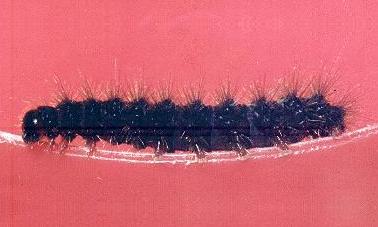
(Photo: Don Herbison-Evans, Sydney, New South Wales)

| (previously known as Zygaena annulata) SYNTOMIINI, CTENUCHINI, ARCTIINAE, EREBIDAE, NOCTUOIDEA | (donherbisonevans@yahoo.com) and Stella Crossley |

(Photo: Don Herbison-Evans, Sydney, New South Wales)
This Caterpillar hatches from a furry mass of eggs laid on a leaf of a foodplant. The caterpillar is black and is covered with stiff black hairs. It feeds on a wide variety of vegetative products, including :
and grows to a length of about 3 cms. When fully grown, the caterpillar seeks a sheltered spot, where it forms the brown pupa in a sparse white cocoon.
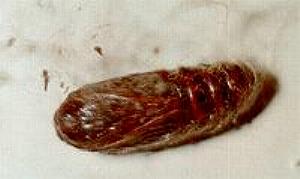
The moth is rather wasp-like. Its wings are basically black, with yellow translucent spots on each wing. The antennae are entirely black. The moth has transverse black and yellow bands on its body. It has a wingspan of about 4 cms. The hindwings are only about half the span of the forewings.
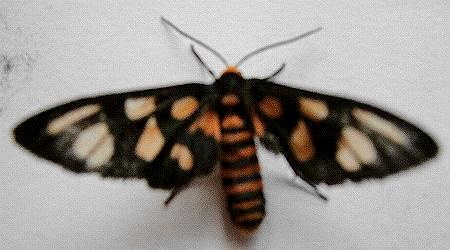
The moths are rather laid back fliers, wafting more than flying around backyards. They are unusual for a moth species in that they fly in daylight hours, usually morning and evening.
Specimens have been found in
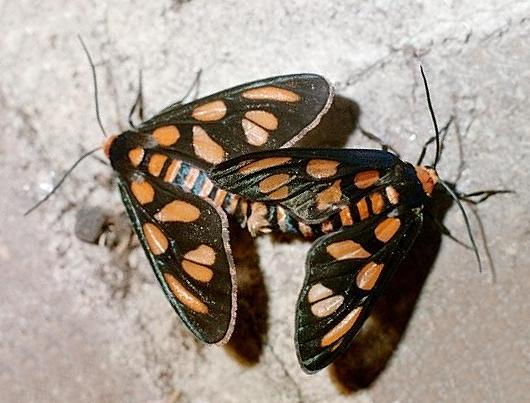
When flying, the adult moths regularly emit ultrasonic clicks. The evidence suggests that this behaviour warns bats that the moth is distasteful and/or poisonous to eat, just as the bright black and orange wing pattern warns possible daytime predators of the same thing.
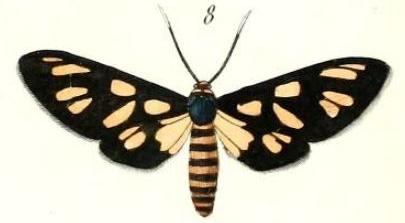 male | 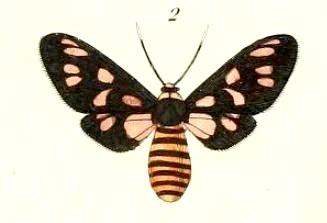 female |
Generally in the genus Amata: the female has a fatter body than the male, but a smaller wingspan.
Further reading:
Jean-Baptiste Alphonse Dechauffour de Boisduval,
Essai sur une Monographie des Zygénides,
suivi du Tableau Méthodique, des Lépidoptères d'Europe, 1829,
Plate 7, fig. 8 and
Plate 8, fig. 2
Johan Christian Fabricius,
Historiae Natvralis Favtoribvs,
Systema Entomologiae,
1775, p. 551, No. 4.
Michael Pennay,
When the flashing lights don't work, use a siren?
The Australasian Bat Society Newsletter,
Number 20, April 2003, pp. 49-51.
 caterpillar |  butterflies |  Lepidoptera |  moths |  caterpillar |
(updated 7 November 2011, 14 September 2025)